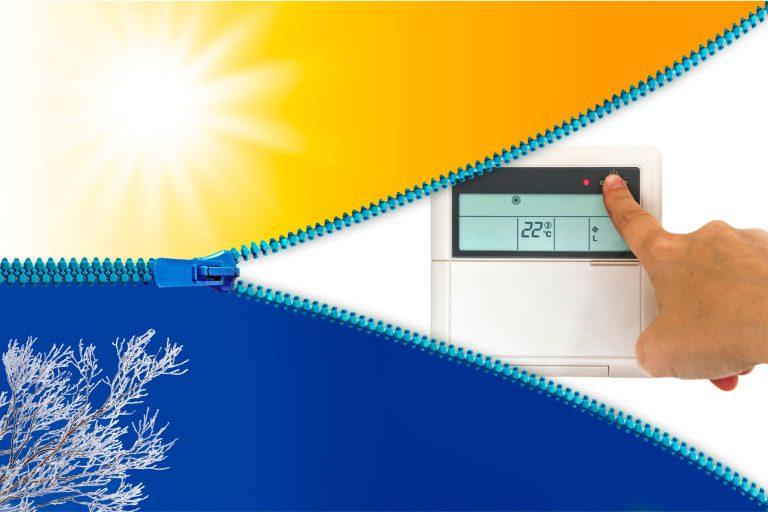- (707)-741-1993
- chris@precisionhvacco.com
- Serving Solano & Surrounding Counties
Heating and Cooling Zoning: Customized Comfort for Every Room

Imagine a home where you can wave goodbye to those never-ending thermostat wars. Picture a living space where each room is perfectly tailored to a preferred temperature, ensuring maximum comfort for everyone. Welcome to the world of heating and cooling zoning!
We all know the frustration of a one-size-fits-all approach to temperature control in our homes. It’s either too warm in the bedroom, too chilly in the kitchen, or just impossible to find that Goldilocks sweet spot. Well, heating and cooling zoning is a thing now.
In this blog, we’ll take you on a journey to discover the wonder and practicality of customized comfort for every room. Say goodbye to blanket-covered disagreements and hello to a harmonious living environment. We’ll explore the ins and outs of heating and cooling zoning, how it works, its benefits, and even guide you through the installation process.
Are you ready? Let’s embark on this journey together!
Understanding Heating and Cooling Zoning
The Basics of Zoning
In the realm of HVAC systems, zoning is a revolutionary concept that breaks free from the limitations of traditional setups. Instead of treating your entire home as a single unit, zoning divides it into distinct areas or “zones” that can be individually controlled to maintain the ideal temperature. This means you can have a toasty living room while keeping your bedroom cooler for a good night’s sleep.
Old vs. New: Traditional HVAC vs. Zoning
In the traditional world of HVAC, a single thermostat rules the roost. It tries to keep your entire home at one consistent temperature, even though different rooms may have varying heating and cooling needs. This approach leads to uneven temperatures, wasted energy, and arguments over who gets to be comfortable.
Zoning steps in to flip the script. By installing multiple thermostats and dampers, you gain the power to regulate temperatures on a room-by-room basis. Each zone can have its own thermostat, allowing you to fine-tune the temperature according to specific preferences and usage patterns. No more shivering in the basement and sweating in the attic!
The Benefits of Heating and Cooling Zoning
Customized comfort for every room is not just a luxury; it’s a game-changer. By heating and cooling only the spaces that need it, you get:
-
- Enhanced comfort
-
- Energy efficiency and savings
-
- Extended HVAC system lifespan
-
- Reduced environmental impact
How It All Works
It’s simple yet ingenious. Each zone has its thermostat, allowing you to set the desired temperature independently. Dampers installed in the ductwork control the airflow to each zone, directing warm or cool air precisely where it’s needed. This way, you get full control over the climate of each room, ensuring everyone is cozy and content.
Integrating Zoning with Your Existing System
If you’re worried about the compatibility of zoning with your existing HVAC system, no more! Zoning can be integrated into most setups, whether you have a forced-air system, a heat pump, or even radiant heating. Working with a professional HVAC contractor is key here. They can assess your current system, design a zoning plan, and seamlessly incorporate it into your home.
Designing a Zoning System
When it comes to designing a zoning system for your home, there are a few key things to consider. Let’s break it down:
1. Evaluate the Needs of Each Room
Take a moment to think about the different rooms in your home. Do some rooms receive more sunlight? Are there areas that are frequently occupied or left unoccupied? Understanding the unique characteristics of each room will help you determine the number of zones needed.
2. Determining the Number of Zones Required
Once you have assessed the needs of each room, it’s time to decide on the number of zones for your zoning system. This depends on factors like room size, occupancy patterns, and temperature preferences. Remember, the goal is to create customized comfort, so more zones allow for finer temperature control.
3. Factors to Consider in Zone Placement
Think about the layout and function of your home. Are there specific areas that require different temperatures, such as bedrooms, living rooms, or kitchens? Consider the natural flow of air and the location of thermostats to ensure effective temperature control in each zone.
4. Professional Consultation and System Design
While you can certainly take a DIY approach, it’s advisable to consult a professional HVAC contractor for designing and installing your zoning system. They have the expertise to assess your home’s unique requirements and recommend the best setup for optimal comfort and efficiency.
Installation and Setup Process
So, you’ve decided to embrace the wonders of heating and cooling zoning and customize your comfort in every room. Great choice! Now, let’s walk you through the installation and setup process to make it as smooth as possible.
1. Hire a Qualified HVAC Contractor
Look for experienced contractors who specialize in zoning systems. Ask for recommendations or do some research to find the right one for your needs.
2. Plan and Prepare
Before the contractor arrives, take some time to plan and prepare the space. Clear any obstructions near the vents or registers to ensure proper airflow. Make sure the area is accessible and remove any fragile or valuable items that might be in the way.
3. Installing Thermostats and Dampers
The heart of your zoning system lies in the thermostats and dampers. The contractor will install individual thermostats in each zone to allow for customized temperature control. Dampers, which regulate airflow, will also be installed in the ductwork to direct heated or cooled air to specific zones.
4. Connect Zones and Configure Controls
Once the thermostats and dampers are in place, the next step is to connect all the zones and configure the controls. This involves wiring the thermostats to the central control panel and programming the settings for each zone. Don’t worry, the contractor will guide you through this process and ensure everything is working correctly.
Begin Your Zoning Experience with Precision Air Solutions in California
Congratulations! You’ve reached the end of our journey exploring the wonderful world of heating and cooling zoning. We’ve uncovered the secrets to achieving customized comfort in every room of your home, and hopefully, you’re feeling inspired to take action.
So why settle for a one-size-fits-all approach to temperature control when you can have tailored comfort that suits your specific needs? Heating and cooling zoning allows you to unlock the full potential of your HVAC system, providing personalized temperature settings for each zone in your home.
By implementing a zoning system, you can bid farewell to those frustrating battles over the thermostat and say hello to a harmonious living environment. No more suffering in a sweltering kitchen while your bedroom turns into an ice cave. With zoning, everyone gets their ideal temperature, and peace and happiness reign supreme.
Now, you might be tempted to try a DIY approach, but let me caution you. While it’s admirable to be handy around the house, installing and configuring a heating and cooling zoning system is best left to the professionals. Precision Air Solutions, with our expertise and experience, can ensure a seamless installation that meets your specific requirements.
Don’t risk the dangers of improper installation or subpar performance. Trust us to handle the job with precision and care. Visit our website to learn more and schedule a consultation.
Say goodbye to temperature battles and hello to customized bliss in every room. Contact us in Benicia, Concord, or Vallejo and start enjoying a home that’s perfectly tailored to your needs.
Invest in comfort. Trust Precision Air Solutions.
Frequently Asked Questions
Heating and cooling zoning is a system that divides your home into separate areas, or “zones,” each with its own thermostat. This allows for individual temperature control in each zone, providing customized comfort and improved energy efficiency.
Heating and cooling zoning works by using multiple thermostats and dampers within your HVAC system. Each zone has a thermostat that controls the temperature for that specific area. Dampers in the ductwork regulate airflow, directing heated or cooled air only to the zones that need it.
The benefits of heating and cooling zoning include enhanced comfort in every room, energy savings, a longer lifespan for your HVAC system, and reduced environmental impact. It allows you to tailor the temperature to suit different needs in different parts of your home.
Yes, heating and cooling zoning can be integrated into most existing HVAC systems, including forced-air systems, heat pumps, and radiant heating systems. It’s important to consult with a professional HVAC contractor to ensure proper installation and compatibility.
The number of zones needed for heating and cooling zoning depends on factors such as room size, occupancy patterns, and individual temperature preferences. A professional HVAC contractor can help design a zoning system that meets your home’s specific needs.
